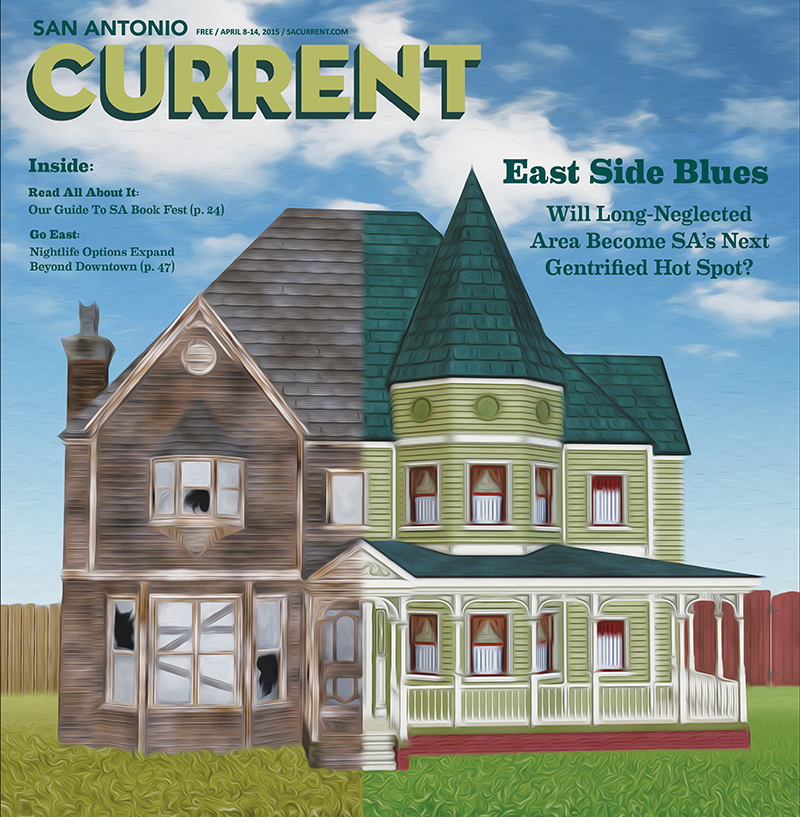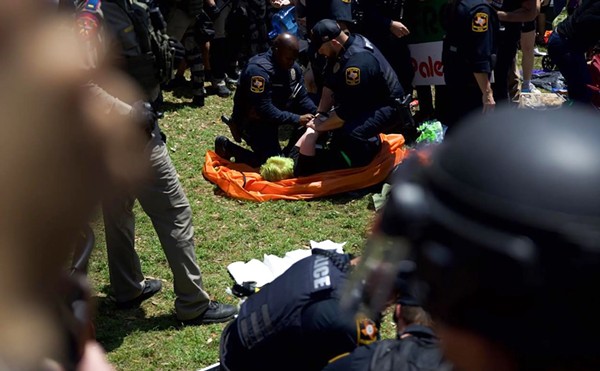
The Alamo City has seen a Manifest Destiny-like northbound sprawl, feverishly gobbling up land for construction past Loop 1604 and beyond.
At the same time, over on the East Side of the city near downtown, neighborhoods languished as crime and poverty rates soared.
That's now starting to change.
Five years ago, San Antonio Mayor Ivy Taylor was a councilwoman representing the East Side and, following on the footsteps of her predecessor Julián Castro, she opened the floodgates to revitalization efforts in some of the Alamo City's most underserved communities.
"I am personally very engaged in this effort," she told the San Antonio Business Journal last summer. "We have a tremendous opportunity to create a model of comprehensive community development that can be replicated in San Antonio and in other cities throughout the nation."
A wave of redevelopment has occurred in historic East Side neighborhoods, bolstered by none other than the nation's top leader.
Two years ago, President Barack Obama designated a 35-square-mile area from Interstate 37 to Fort Sam Houston and AT&T Parkway to East Commerce as one of the first "Promise Zones" in the country.
The designation brought access to exclusive federal grants in an effort to improve the lives of more than 64,000 San Antonians who face a 35 percent poverty rate in what are still considered some of the Alamo City's most rundown and violent neighborhoods.
It hasn't completely turned around, but in many aspects, the East Side is starting to look like a shell of its former self.
Private development has spilled into neighborhoods in and around the Promise Zone, creating a real estate boom and bringing an influx of new homes and businesses.
Signs Of New Life

Wheatley Courts is the bull's eye of what's called the "Choice Neighborhood."
The former public-housing complex is surrounded by a high chain-link fence and the troublesome block that used to be the epicenter of gang activity in the neighborhood is now comprised of large piles of dirt and deep holes in the ground to make room for new housing.
The renovation of Wheatley Courts from a public-housing project into a mixed-income housing complex for more than 500 residents is the anchor for East Side revitalization through the Promise Zone initiative.
The massive undertaking still faces challenges, as highlighted in a 2012 study by the San Antonio Housing Authority for its "transformative" plan for the Wheatley Courts neighborhood.
In the study area that is bounded by New Braunfels Street to the west, Interstate 35 to the north, railroad tracks to the east and Martin Luther King Drive to the south, 57 percent of the housing stock was built prior to 1959 and there are around 180 vacant lots.
Violent crime has also been a perennial dilemma. It usually stood at twice the overall city rate, according to the SAHA study. Not anymore. All crime has dropped by seven percent, according to the city.
It may be way overdue and change is coming about gradually, but there's a certain buzz that positive change is palpable in the East Side.
"First of all, crime has been decreasing because of the renewed focus on community policing. We have neighborhood watch programs. The police department is engaging more with the community and building trust," said Mike Etienne, director of the San Antonio EastPoint & Real Estate Office, which coordinates revitalization efforts in the Promise Zone between the city, developers and a host of nonprofit agencies.
Then there are high school graduation rates. For instance, the SAHA study found that 43 percent of adults didn't graduate high school, compared to Bexar County's rate of 18.5 percent.
But that's starting to change for today's youngsters.
"The high school graduation rate has increased, especially at Sam Houston High School, which was 46 percent, and has gone as high as 84 percent," Etienne said.
Part of the reason for this drastic increase is the federal Promise Neighborhood Grant. The monetary infusion has been used to pay for tutoring and coordinating internships. And the San Antonio Independent School District has used it to hire more experienced teachers.
Education is key to future prosperity, which is why revitalization efforts need to focus on workforce development, Etienne said.
"There's a large percentage of East Side residents who have significant barriers to employment, like adult education, criminal backgrounds, ESL, daycare, transportation and so we do have barriers," he said.
In response, the city has tapped Alamo Colleges to develop a strategic plan to address those barriers, while St. Phillips College provides adult education and GED certification.
"It's critical that the residents have a job, that they have income to pay for houses that we build ... to improve the quality of life for their families," Etienne said.
Beyond injecting new life into the former Wheatley Courts trouble spot, some pockets of the East Side are seeing an infusion of modern housing investment.
At Cherry and Burnet streets, you'll find a sleek new high-end apartment complex at the foot of the Hays Street Bridge called Cherry Street Modern, featuring 12 units sold out before construction was even finished last year.
Units at the modern-styled box-like complex, which sits across the street from the newly opened Alamo Brewery, sold for about $177,000 to $190,000 apiece.
Angel Lopez, a 32-year-old system administrator at Rackspace, was quick to grab one.
"The main attraction to me was the contemporary style. This place had a lot of what I was looking for," Lopez said.
He said the rooms were laid out just right, the kitchen was big and open, there was a smooth floor of stained concrete and it featured a peaceful view of downtown.
"I enjoy the small-town feel of this neighborhood. The many styles of architecture found in this neighborhood are indicative of its rich history," he said.
As he sees it, revitalization has been great for this area.
"The new businesses opening in this area have definitely brought more people to visit the East Side. I'm happy to witness it," he said.



















